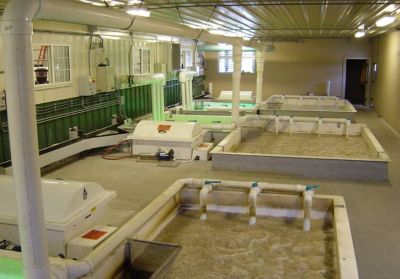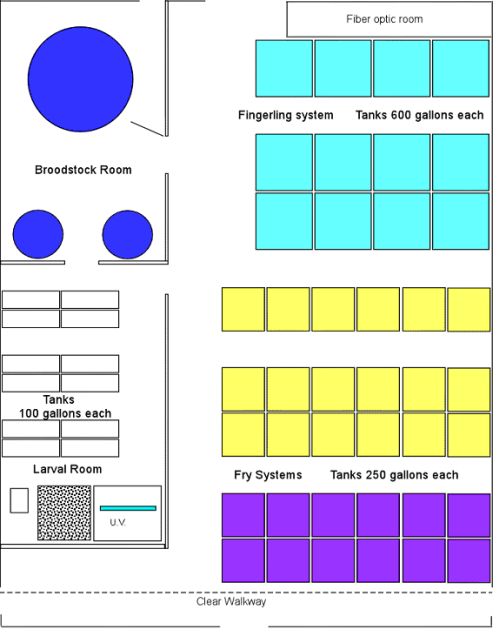
Hatchery Layout. The
separate colors represent individual systems. The larval room has its
filtration components within the room, but other systems have the
filtration components outside of the building.
Sturgeon Larval and Fingerling Production
Egg and Larval Systems
Until
our Siberian sturgeon are old enough to produce eggs, we will purchase eggs
from other countries culturing these species, such as Hungary Germany
Sturgeon Eggs
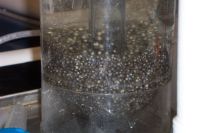
When the
eggs hatch, the larvae initiate feeding one
week later and are fed at 10% of their body
weight. The
larvae are fed a commercial feed at hatch and will remain in the larval
room system for approximately
6 weeks (0.6 grams in weight).
Larval System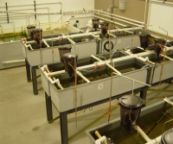
Fingerling Systems
After transfer to the fry and fingerling systems, the fingerlings are fed a commercial feed. The feed is dispensed by automatic feeders hanging above each tank. The fish will stay in the hatchery for 5-8 months before being moved to the growout facility.

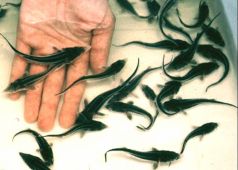
The complete building diagram is shown to the left.

